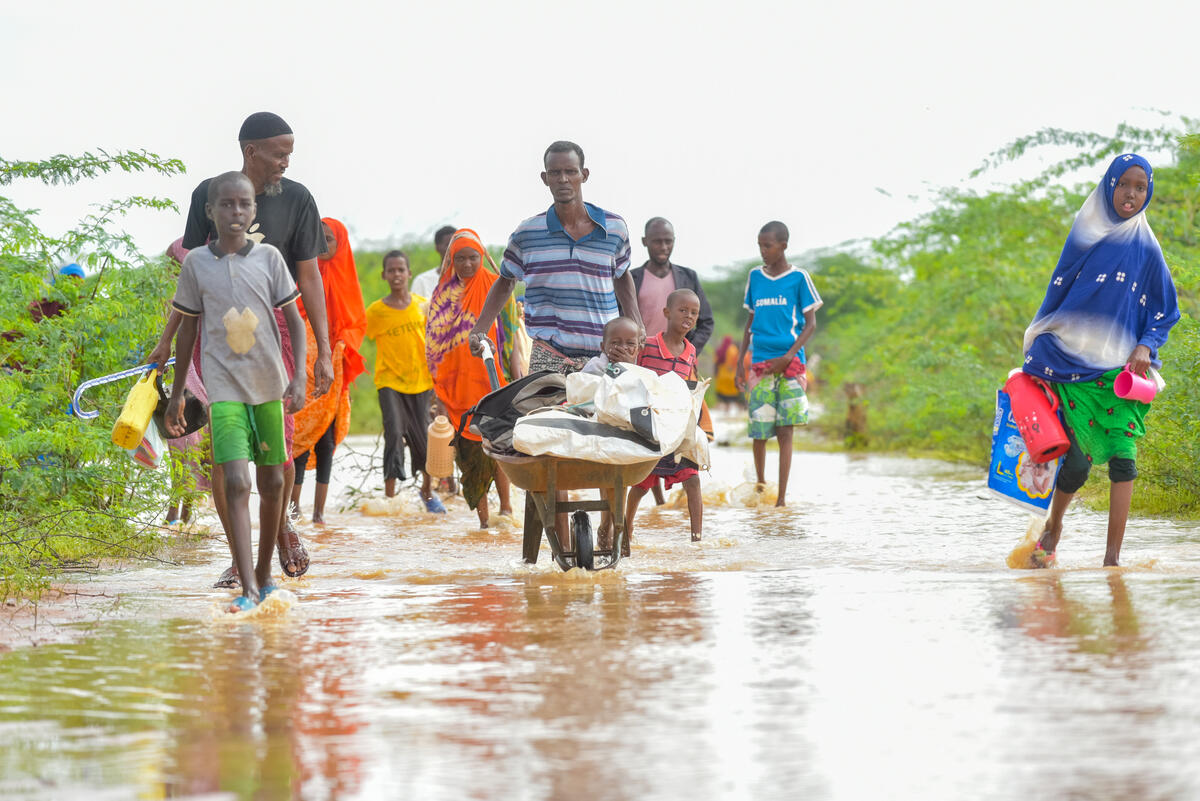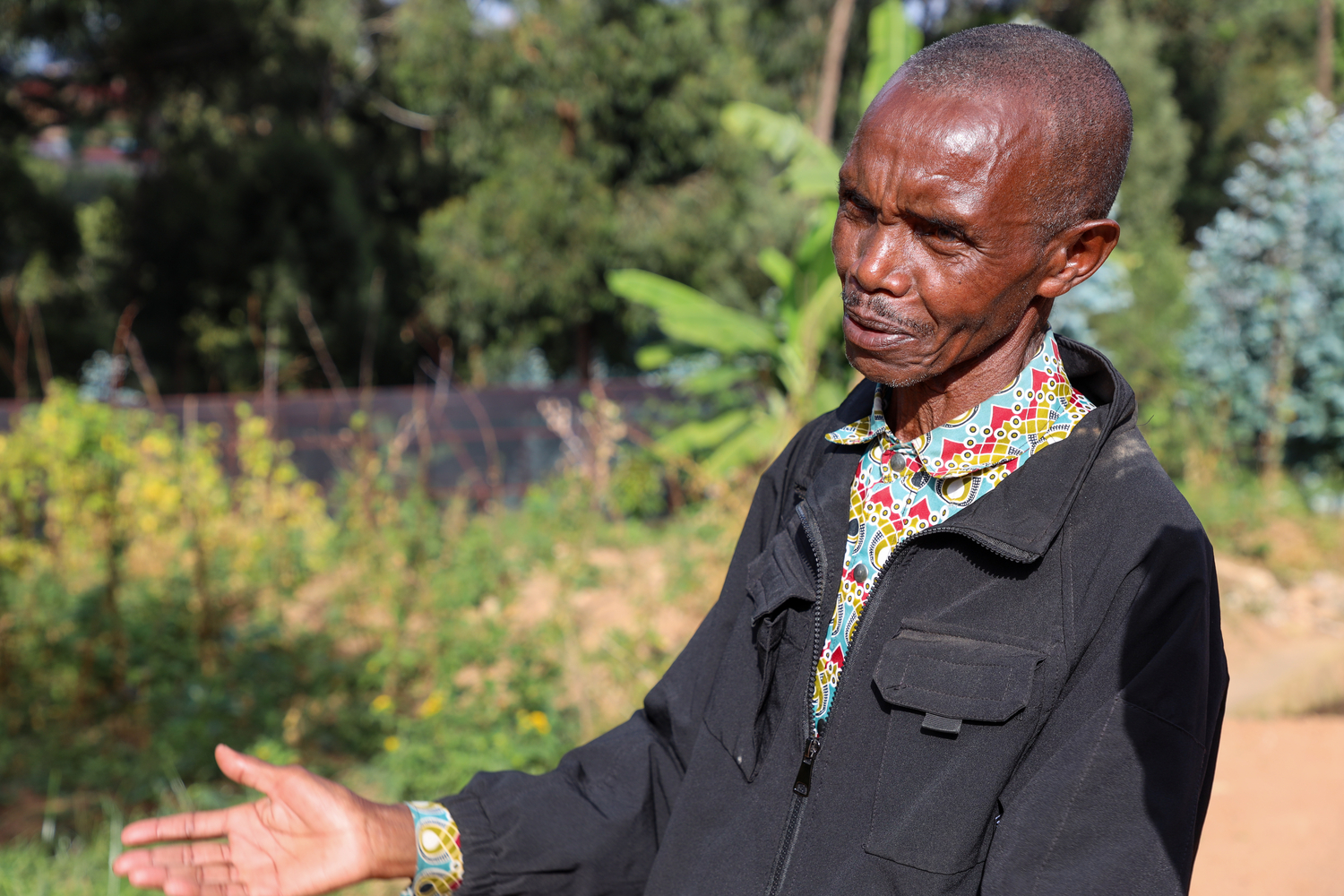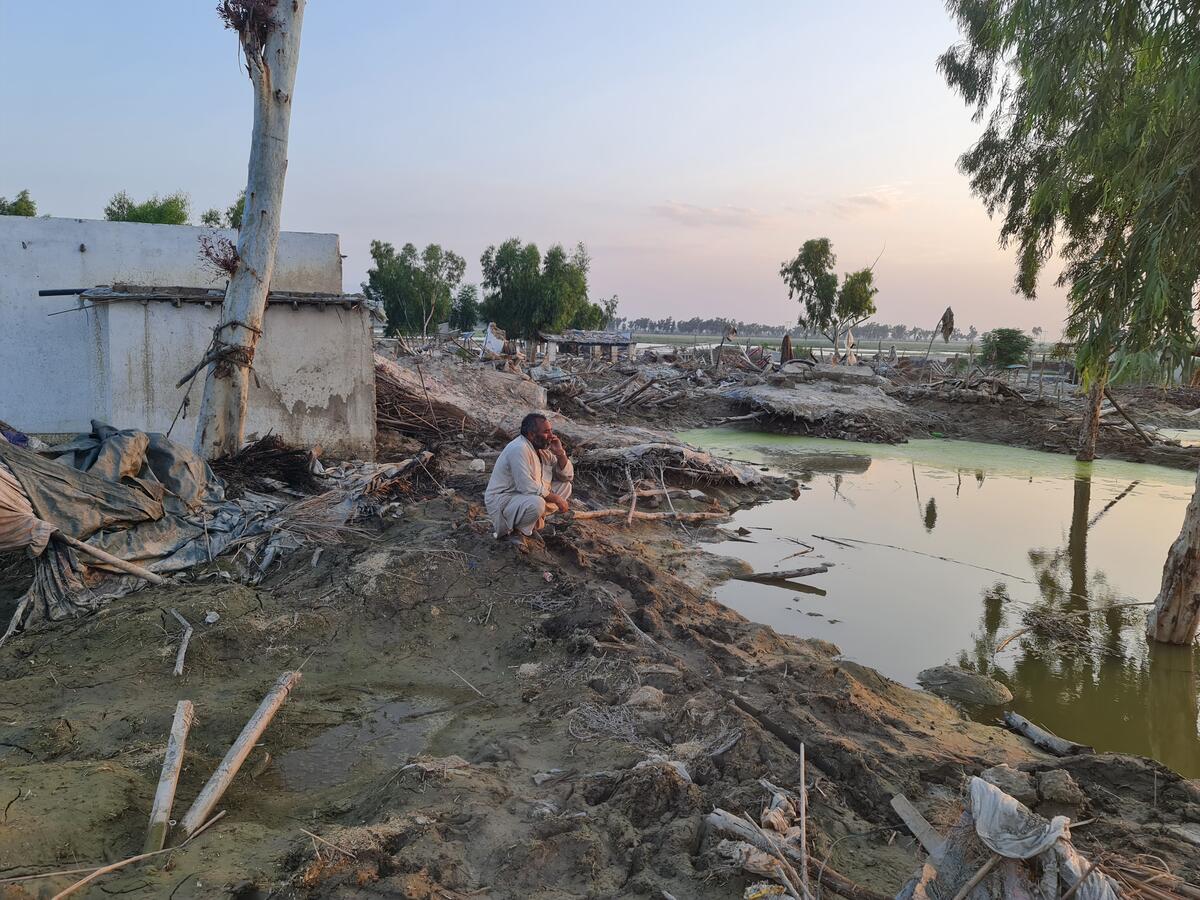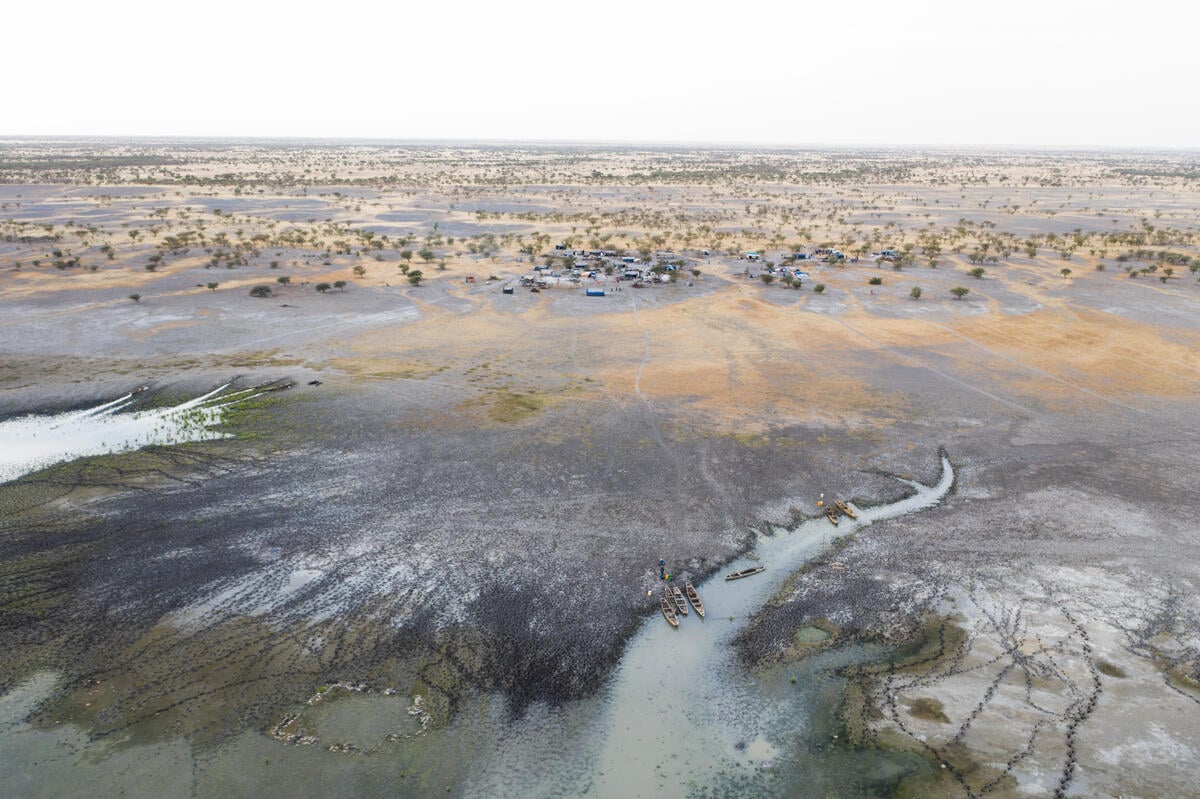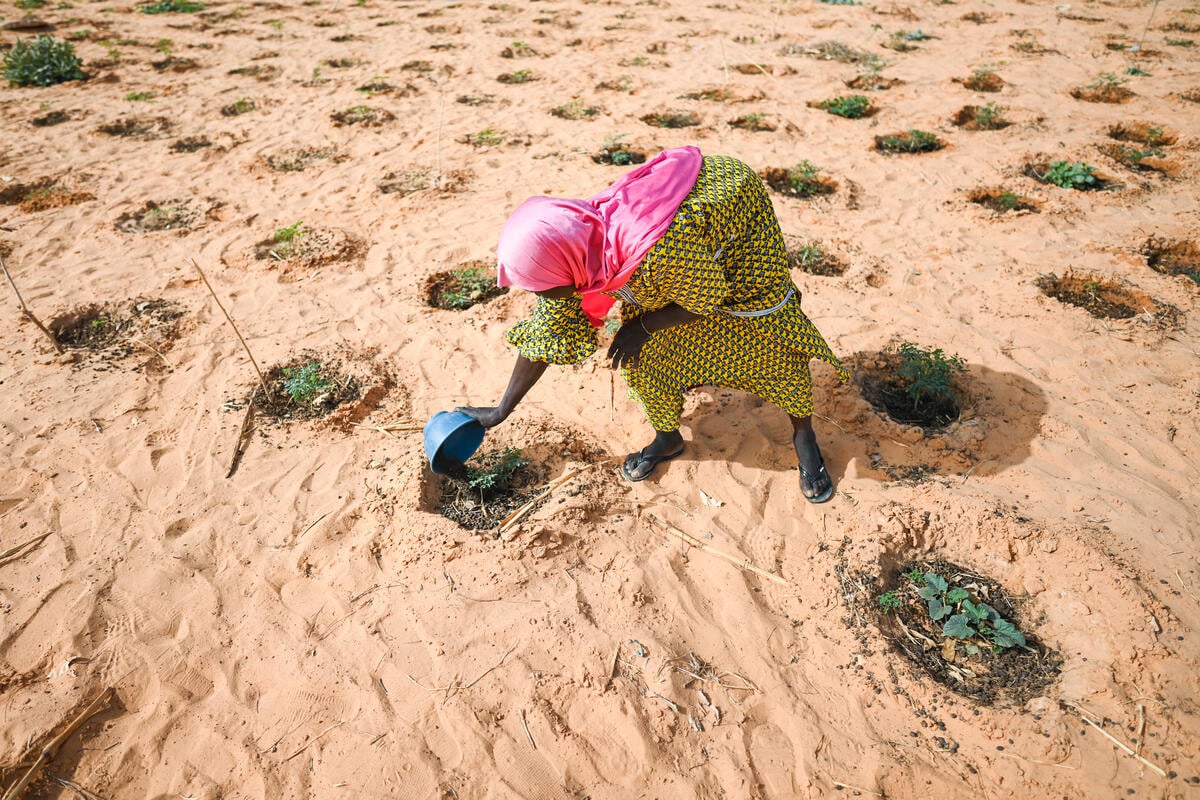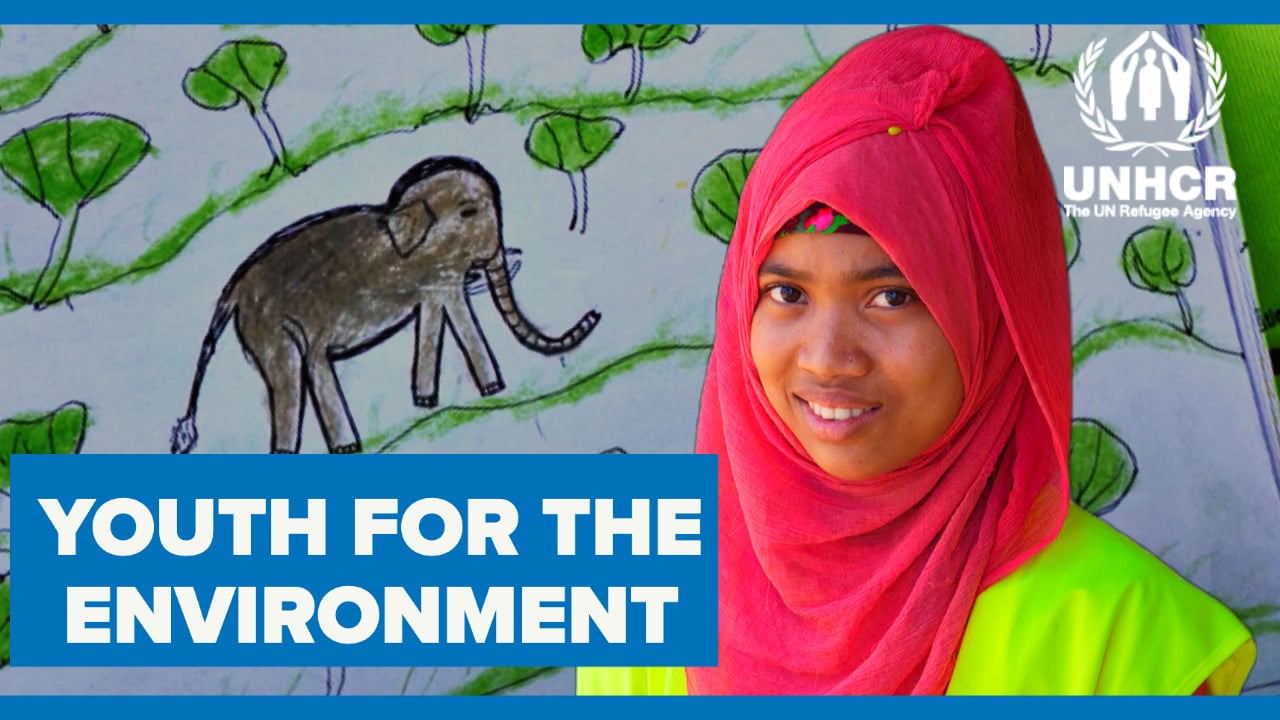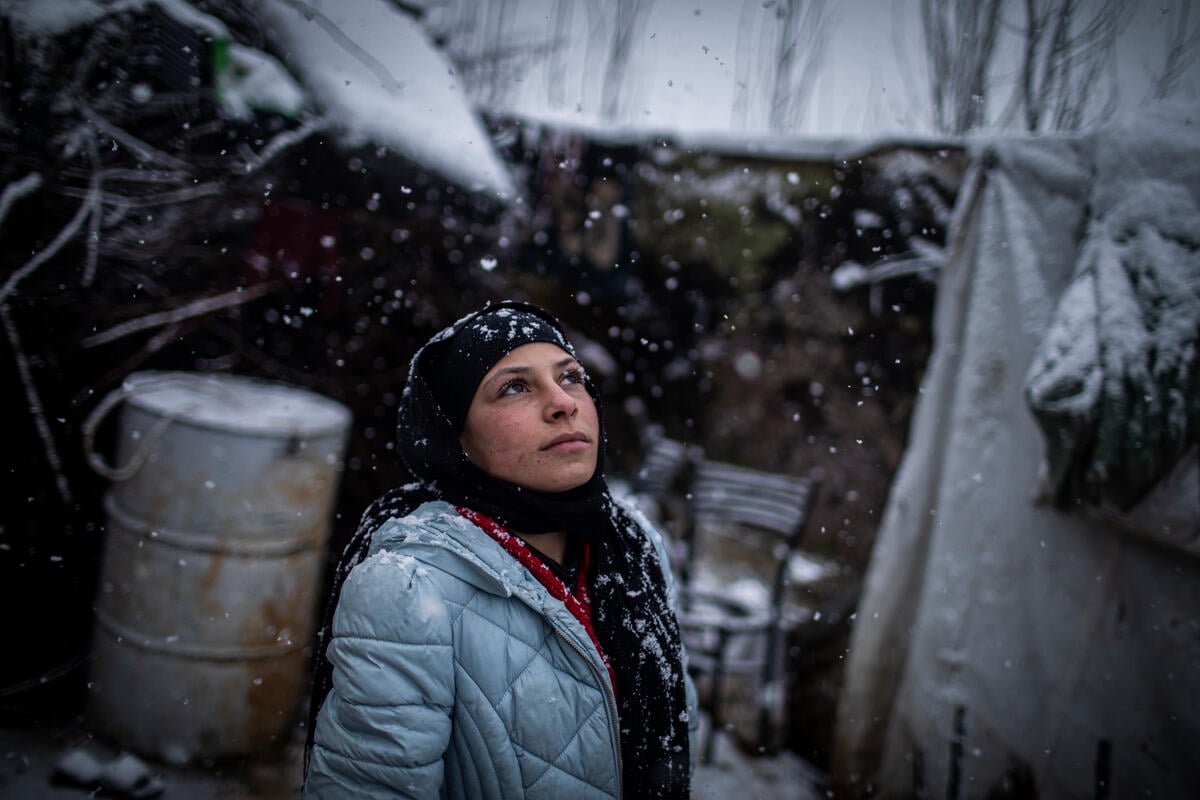Data reveals impacts of climate emergency on displacement
Data reveals impacts of climate emergency on displacement

A man walks through a flooded street in Tela, Honduras as Hurricane Eta approaches (3 November, 2020).
The impacts of our changing climate are being felt worldwide, but countries already struggling with conflict, poverty and high levels of displacement are dealing with some of the most severe effects.
From Afghanistan to Central America, droughts, flooding and other extreme weather events are hitting those least equipped to recover and adapt.
This Earth Day, UNHCR is releasing a new data visualization – ‘Displaced on the frontlines of the climate emergency’. It shows how our warming world is compounding risks for people already living with conflict and instability, driving further displacement, and often decreasing possibilities for return.
Disasters linked to climate change may worsen poverty, food insecurity and access to natural resources in ways that can stoke instability and violence. The data visualization looks at the example of Afghanistan where recurring droughts and floods combined with decades of conflict and displacement have left millions of people vulnerable to hunger this year.
Mozambique is experiencing a similar confluence of conflict and multiple disasters with one cyclone after another battering the country’s central region while increasing violence and turmoil to the north displaces hundreds of thousands of people.
Many of the countries most exposed to the impacts of climate change are already host to large numbers of refugees and internally displaced people. In Bangladesh, more than 870,000 Rohingya refugees who fled violence in Myanmar are now exposed to increasingly frequent and intense cyclones and flooding.
"Waiting for disaster to strike is not an option."
UNHCR is working to reduce the risks extreme weather events pose to refugees and internally displaced people. In Bangladesh, for example, we are working with partners to plant fast-growing trees in parts of the refugee camps that are prone to landslides during monsoon storms and distributing alternative energy sources to firewood for cooking.
As some 40 countries participate in the virtual Leaders Summit on Climate hosted by President Joe Biden on 22 and 23 April, UNHCR is calling on all States to step up their action to combat climate change and to provide protection and assistance to people displaced by its effects.
“We need to invest now in preparedness to mitigate future protection needs and prevent further climate caused displacement,” said UN High Commissioner for Refugees Filippo Grandi earlier this year.
“Waiting for disaster to strike is not an option.”

